There Are No Shortage Of Stories From People Who Fondly Recall Going To Theaters As Kids & Teenagers To See STAR WARS On Its First Week Of Release 38 Years Ago Back In 1977. I Was One Of Them.
Over the years, the emotional wonder of the Star Wars saga (while still fresh in my mind), has given way to a more rational assessment of the film, and how it has become such a huge part of our popular culture. I began investigating the Star Wars franchise focusing my analytic lens on aspects of the film’s production and Disney’s studio business in general, that has made it such a stupendous financial success as well.
Take this tour with me, of an idea that began in 1973, that has now lasted over 38 years so far, and promises to go on just as longer into the future.
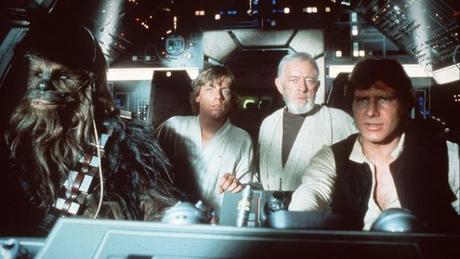
And If You Feel Nostalgic Enough To Recall The Effect This Film Had On People Then, Here Are A Few Reviews Of The Original 1977 Star Wars Release.
HOLLYWOOD REPORTER | VARIETY | THE GUARDIAN | ROGER EBERT | NEW YORK TIMES | SF CHRONICLE
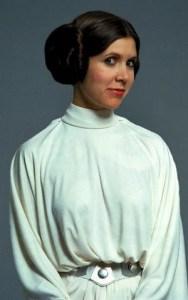
Carrie Fisher as Princess Leia.
SOME INTERESTING TRIVIA ABOUT THE ORIGIN OF STAR WARS
(From Karl Quinn, National Film Editor, Sydney Morning Herald)



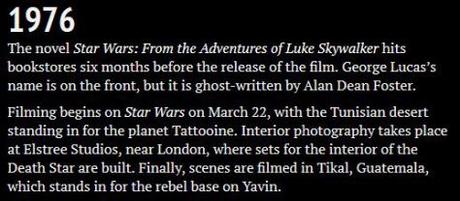

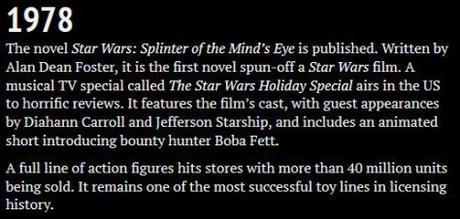


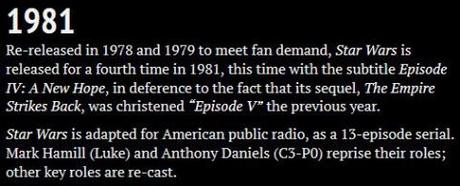


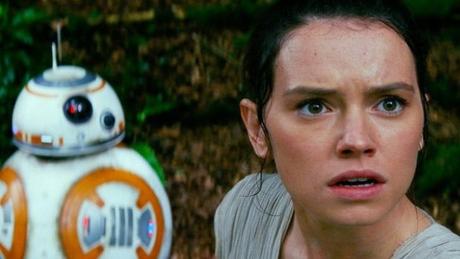
“STAR WARS (EP.VII) – THE FORCE AWAKENS” cost $350 million to make and market, and it’s already reaped $800 million in global ticket sales. It shattered both the single-day gross revenue record, becoming the first film to pull in $100 million in a single day, and raked in $238 million in North America alone on Day 1. The film is projected by analysts to earn upwards of $1.95 Billion in the final global tally.
DISNEY’S THEATRICAL-RELEASE PLAN FOR “THE FORCE AWAKENS”:
The Film Officially Opened In 4134 Theaters Across The United States, And As Of Writing This It Was Still Opening In An Increasing Number Of Theaters Internationally.
The strategy was to release the movie in many theaters and simultaneously in many countries. (China was not included). The movie opened in what’s called day and date (also known as concurrent release) in many countries, making it like a global event.
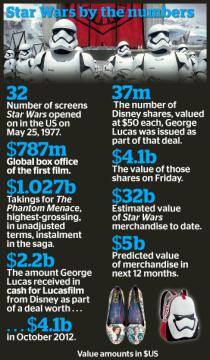
Costly tickets for large format and 3-D screens played a key role in the massive box-office haul. According to Disney, 49% of the domestic theater audience saw the movie in a more expensive, premium format.

In South Korea, it will screen at premium IMAX and its 4DX screens, the state-of-the-art theaters equipped with motion-effects chairs and environmental effects tuned to the on-screen activity.
“Star Wars: The Force Awakens” won’t be released in China until January 9, as the 2015 quota for imported films was exhausted by early December. That leaves Chinese local films to rule the box office during the most lucrative month of the year. The China release on Jan. 9 will be the last international opening. This is because previous six “Star Wars” films were not released theatrically in China, meaning today’s key movie-going demographic should be relatively unaware of the franchise.
IMAX Corp. sold $48 million in tickets globally, nearly doubling its prior record for an opening weekend (and this excluding China !). Two weeks before release in the U.K., 238,000 tickets had been sold already by just one theater chain Vue. Cinemax had a record pre-sales for the film selling more than 40,000 tickets within 24 hours, the highest number of pre-sold tickets in the exhibitor’s history. Meanwhile in Japan, the Toho Cinemas chain reported that when they began taking online orders for advance tickets on Nov. 18, servers went down and all opening-day tickets were sold out on the first day.
And for the three astronauts who were scheduled to blasting off on the Soyuz rocket headed for the International Space Station just two days before release of the film, a projector already in orbit has been cued up to Episode VII when they get there. Many of today’s astronauts were likely inspired by the 1977 franchise and its legacy.
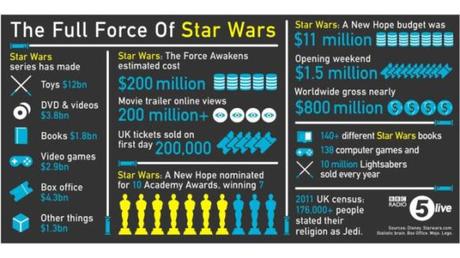
Audience Demographics: On the Friday of release, 63% of the audience was male, but by Saturday that percentage dropped to 58% as the fanboy-driven early crowds started to broaden, according to Dave Hollis, executive vice president of distribution at Disney’s movie studio. The research firm Rentrak also gathered audience data from 20 markets across the country which showed 70% of the typical audience to be male, with the biggest group attending to be in the 18-34 age groups comprising 34% of total attendees.
Bringing More Butts-On-Seats: The only finite resources for a movie like The Force Awakens are screens and seats: you cannot force more butts into one movie seat at one time. So if it can’t be done spatially, better it be done temporally, by exponentially increasing the number of available screenings. The Force Awakens is being seen at weird, sci-fi-like times of the day – 3am screenings, 5am screenings – and in as many as eight screens per multiplex, forcing other movies into split screenings and smaller, pokier rooms.
Even a film-maker as respected as Quentin Tarantino whose new film release of The Hateful Eight (expressly designed for large screens and sumptuous exhibition spaces like Hollywood’s Cinerama Dome) – found themselves strong-armed out of plum, state-of-the-art screening venues by Disney programmers wielding ridiculous amounts of bribery-cash and veiled threats about access to future releases.
The trailers used for the film were what’s called peering trailers. They got people very interested in the movie but they did not disclose much of the content and the storyline, so they were very creative in generating these teaser trailers that got people to the movie theaters. They also made the Thursday showings around the country … like a special event.
A SNAPSHOT OF THE FILM’S THEATRICAL PERFORMANCE TO DATE (As Of Christmas Day 2015)
Domestic Opening Weekend Box Office: $247,966,675
(#1 rank, 4,134 theaters, $59,982 average gross-per-theater)
Share of Total Box Office Gross (Among All Releases That Day): 86.1%
Total Lifetime Gross (ongoing, to be updated)Domestic: $391,051,329 48.1%
+ Foreign: $422,400,000 51.9%
= Total Worldwide: $813,451,329
Interestingly, there are some box-office metrics where The Force did not Awaken for this Star Wars franchise film.
Average Gross-per-Theater Of All-Time Episode VII Ranked # 83
Average Gross-per-Theater For Opening Weekend
Episode VII Ranked # 71
The top honor here still stays with another Disney film THE LION KING which swept box offices back in 1994.
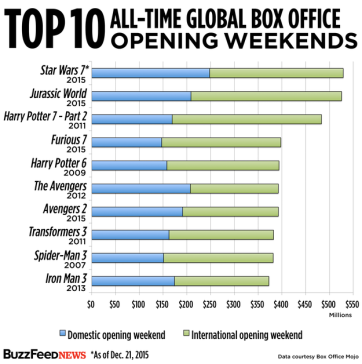

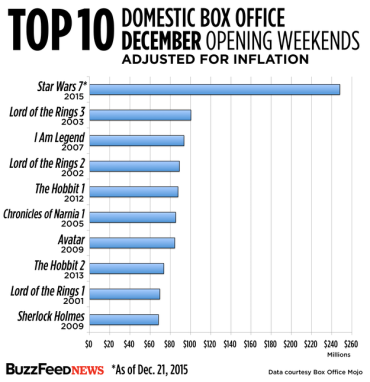
DISNEY’S FRANCHISE DEVELOPMENT STRATEGY
Star Wars For Disney Is Not Just A Movie Series; It’s A Launching Pad For A Whole Bunch Of Business Beyond The Screen. When Disney bought Lucasfilm for $US4.1 billion in October 2012, it probably got a deal of the century.
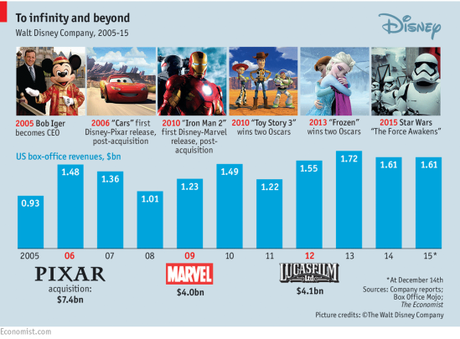
Disney’s ongoing plans for the franchise include not just the new trilogy – episodes VII, VIII and IX, to be released in 2015, 2017 and 2019 – but three other spin-off movies, to be released in 2016, 2018 and 2020 (the year the studio regains full rights to all except for the first film, which is set to remain with Fox forever). There are also major theme-park attractions planned, plus computer games, television series.
Disney Has Put A “Productive Lifespan” Of 40 Years On The Franchise.
By the time it has eked the last dollar out of it, Star Wars will be almost 80 – older even than Harrison Ford, the 73-year-old returning as Han Solo after 30 years away from the series.
Factor in the merchandise (value to date, more than $US32 billion), the theme park rides (amusement parks brought in more than $US15 billion last year for Disney, more than twice as much as the movie division), and spin-offs (The Force Awakens is the first of six planned films; there are books, comics, TV series and computer games too) and you can see where the real value lies. This is typical Disney strategy.

DISNEY AWAKENED ITS MARKETING & PROMOTIONAL FORCE
Disney leveraged the ecosystem of licensing and in particular signed up non-traditional partners such as Cover Girl cosmetics and Zales jewelry, among others. Pepsi, Burger King, M&MS/Mars, Hasbro and Kellogg’s are all signed up for the tie-in frenzy, while the shelves of Target, Walmart and pretty much every department store chain in the nation (world) groan with Star Wars-branded products. And personal appearances by stars and director JJ Abrams extend from Good Morning America to The Tonight Show and every single second of the day in between. White House news conferences have been attended by imperial storm-troopers and the president himself got a special White House screening.
The marketing strategy for “The Force Awakens” is merely the latest iteration of this formula, supported by all newly available online platforms for advertising, fan-stoking and tie-in merchandising (This didn’t really come into play until the widely derided cuddly toys of Return of the Jedi in 1983). Market-saturating ubiquity in promotions is now possible in ways it simply was not in 1977, but the broad principles still apply.
Disney launched toys before the movie release and before the critical holiday shopping season, making that an event in and of itself by labeling it “Force Friday,” and bringing key partners like Amazon, Target and Toys “R” Us. The brand partnerships were big and bold and really pinned their only hopes for holiday marketing campaigns on Star Wars. Covergirl, Duracell, General Mills, HP, Subway and Verizon launched major efforts and timed those launches in a way that engaged consumers and fans with products and ads that provided as much unique new content, continuous, more organic effort online and on social platforms in particular.
Mark Hamill Goes Undercover as a Stormtrooper on Hollywood Blvd
Events & Product-Marketing Campaigns. The promotional campaign that started with an 88-seconds piece of footage Disney first teased more than a year ago 2014, was then followed by a longer second teaser in April 2015. Finally the official trailer debuted in October 2015 along with countless TV spots.
The cast made the rounds on the talk show circuit and timed it all perfectly. Even the normally reluctant Harrison Ford was cooperative, and playfully so.
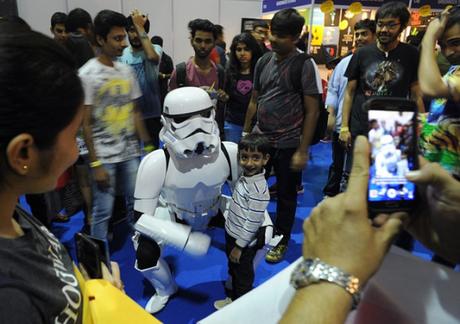
In print, Disney fed the promotional machine first with original content by way of new novels and comic series—which told the story of what has supposedly happened in the 30 years between Return of the Jedi and The Force Awakens. Many of the comics focused on single characters, with exclusive series dedicated to Vader, Princess Leia, Chewbacca and Lando. On top of that, Disney meticulously controlled and timed the releases of exclusive interviews and photos with publications like Vanity Fair, Entertainment Weekly, Rolling Stone, Fortune, Empire and Time. Each new set of photos gave the audience something new to talk about. Millennium Falcon again became a subject of discussion following a photo-feature shot by celebrity photographer Ann Liebovitz.

Let’s not forget that brands have to earn their way into users’ social feeds. Star Wars earned its way into those feeds and the right to stay by publishing and sharing great content. A new app was launched, games arrived, all feeding elements of the overall story Disney was telling.
Events like Comic-Con and Star Wars Celebration were used to further feed the frenzy. Disney streamed live on YouTube, revealing cast members and characters, teasing future films, and essentially bringing fans into the experience as if they were family.
THE MERCHANDISING BONANZA
Books, comics, and – the jewel in the crown – official licensed merchandise.
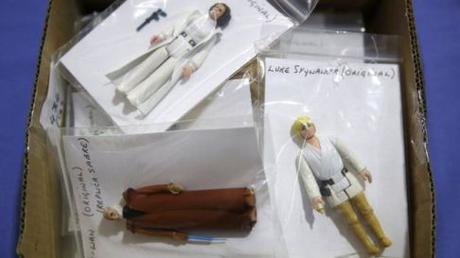
The original Star Wars toys from the 1980s are still sold at auction and are sought-after by collectors
A great example of branding was bringing toys to the marketplace before the movie was actually available. Typically, the merchandising, the toys — these things typically come after the movie. In the case of Ep. VII, Disney preceded with the merchandise, made them available, advertised and showed them before the release of the movie so they came as promotion for the movie as opposed to the more traditional way where the merchandise comes later as a supplementary income.
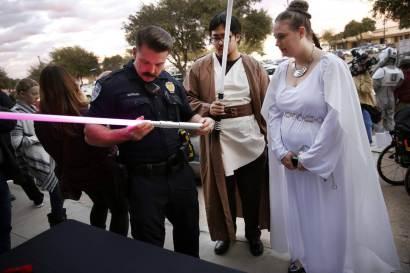
A light saber is inspected outside a Texas theater.
In August, Macquarie Securities analyst Tim Nollen predicted merchandise linked to The Force Awakens could top sales of $5 billion in the first year alone. About $500 million of that will go to Disney in license fees. In September, Disney launched ‘Force Friday’, where merchandise from “Star Wars: The Force Awakens” went on sale globally. It was preceded by a global live unboxing event broadcasted on YouTube from 15 cities around the world, where highlights of the new product range were officially unveiled. According to Mykola Golovko, senior analyst for Toys & Games at Euromonitor, “The highly-anticipated
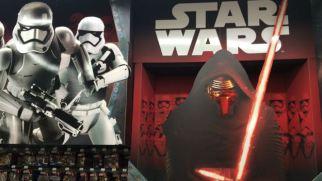
Another report from IHS Maritime & Trade said containerized toy imports to the U.S. are expected to increase by 10.9 % on-year by end of 2015. That’s an equivalent of 581,053 20-feet long shipping containers worth of toys, boosted by demand for Star Wars merchandise. In contrast, toy imports to the U.S. saw consecutive on-year declines between 2011 and 2013, before seeing a 3 % uptick in 2014.
To get a sense of how valuable merchandise might be, consider this: The six movies so far released have taken about $4.4 Billion in gross theatrical revenues globally. According to Chris Taylor, author of How Star Wars Conquered the Universe, the franchise has so far sold about $32 Billion worth of Star Wars merchandise in stores & online.
“PULL-THROUGH” REVENUES FOR BACK CATALOG A spike in a franchise back-catalog typically only occurs in a one to two month period around the movie launch date. In the case of Star Wars Episode VII, digital sales of the previous six movies have been growing rapidly for nearly five months. The three oldest movies, Episode IV, V and VI were the most popular titles, although all six movies saw a considerable spike in downloads from November 2015 onwards.
STAR WARS FORCES NEW SPACE FOR ITSELF AT DISNEY’S THEME PARKS
To make way for “Star Wars,” Disneyland is about to launch its largest expansion ever, and plans to shut down a significant chunk of its Anaheim theme park in Orange County, home of the Disneyland and Disney California Adventure.
In Tomorrowland, the Space Mountain and Star Tours rides have been overhauled to include special effects borrowed from the recently released movie “Star Wars: The Force Awakens.” The Galactic Grill eatery now sells treats inspired by “Star Wars” characters, such as a dessert dubbed Darth by Chocolate and the Cheese 3PO Burger.
To build the new 14-acre “Star Wars” area, the park will permanently close Big Thunder Ranch in Frontierland, Big Thunder Ranch Barbecue, Big Thunder Ranch petting zoo and Big Thunder Ranch Jamboree, starting Jan. 10. The park expansion would also include a re-creation of the Millennium Falcon, in which guests can take the controls for a “customized secret mission,” along with an immersive attraction that will put visitors into “a climactic battle between the First Order and the Resistance.”
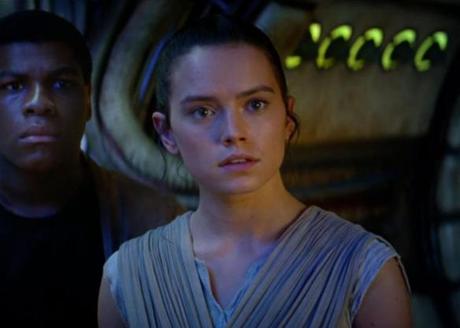
EP. VII : DOES THE FINAL PRODUCT STAND UP TO EXPECTATIONS?
Where The Force Awakens Stepped Onto New Ground. J.J. Abrams’s work to make the “Star Wars” universe look vastly more inclusive is clear throughout “The Force Awakens.” There are women and people of color in the cockpits of X-Wings and at battle stations in both Imperial and Resistance facilities. Leia Organa (Carrie Fisher) is still fighting as part of the Resistance, but she’s stepped into a leadership role previously occupied by a number of men. During one climactic sequence when the evil First Order destroys a series of Republic-controlled planets, the extent of what’s happening is communicated through a long shot of a woman of color who is watching destruction rain down on her and her companions.
It Also Stood On Shoulders Of The Original Star Wars To Succeed. “The Force Awakens” was designed to emulate the original trilogy in style and substance. It returned stars Harrison Ford, Carrie Fisher and Mark Hamill to their original roles, while introducing a new cast of Jedi Knights, storm troopers and imperial officers led by Daisy Ridley and John Boyega. Star Wars: The Force Awakens has been that it’s a baldfaced rip-off of the original Star Wars, now known as Star Wars: Episode IV — A New Hope. Force Awakens is more a product of the same market logic that gave rise to the Marvel Universe films—a logic that rewards emulation and nostalgia above all; reusing ideas, characters, and narrative arcs that have already proven lucrative—than it is of the imagination that launched the series nearly four decades ago.
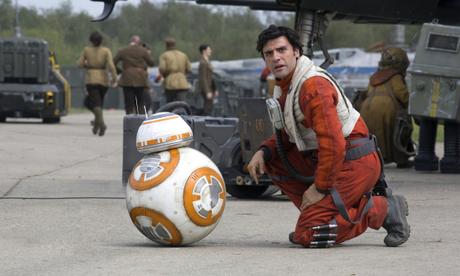
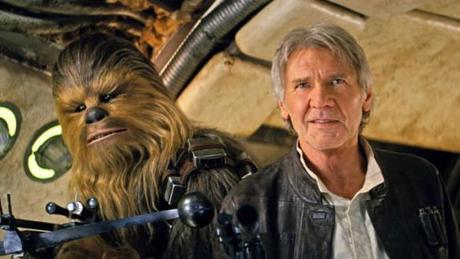
They sought not to create full-scale retreads of the original Star Wars but to expand and enrich it; the films were bursting with color, imaginative city-worlds, clone armies, duels on volcano planets, and an explanation of the fall of a democratic intergalactic society and the rise of an autocratic Empire.
1) Rey is basically Luke Skywalker all over again. The new trilogy’s hero, the plucky desert planet dweller Rey (Daisy Ridley), is basically Luke Skywalker with one character trait changed — instead of wanting to leave her planet of Jakku, as Luke wanted to leave Tatooine, she wants to stay. She’s an untrained young woman, powerful in the Force, who turns out to be naturally gifted at a bunch of things.
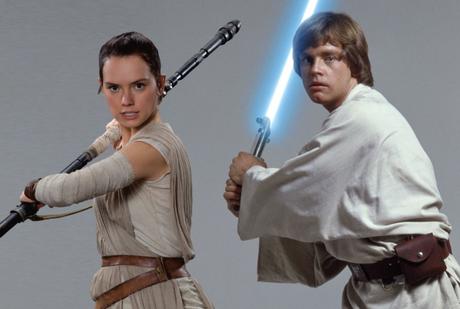
Rey’s flashbacks:They begin with her hearing a child’s voice, which draws down to the basement and leads to her finding Luke’s lightsaber. When she touches the saber, she suddenly has a series of visions: She sees Luke’s mechanical hand reaching out to R2-D2—presumably, as we later learn, shutting him down. Next, she sees Kylo Ren and a small group of black-clad figures standing over a field of what appear to be corpses—a brief glimpse of the Jedi slaughter that likely prompted Luke’s self-exile. And then she sees herself: a young, screaming child, being pulled away as she reaches desperately toward a spaceship flying off in the distance. In other words, Rey was left behind on Jakku—hidden, perhaps, like Luke and Leia were as babies—after the massacre, possibly to preserve her life. Rey meets Han Solo roughly the time Luke met Obi-Wan Kenobi.
2) The First Order Is Nothing But The Empire Itself. The First Order fulfills the role of the Rebels, and its strike against the Republic is the equivalent of, say, a terrorist cell nuking a major American city. The Republic is in charge; the First Order aims to depose it.
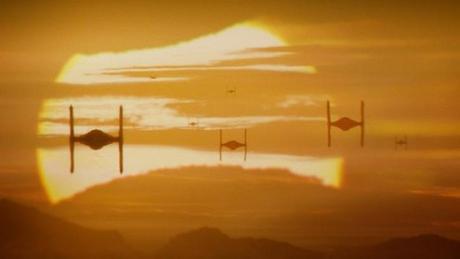
3) Kylo Ren is Darth Vader (& for no real reason). So Is Snoke the Emperor. Kylo Ren is a rewrite of Jacen Solo, Han and Leia’s son who falls to the Dark Side and kills Luke’s wife, Mara Jade.
4) Han’s Death From Kylo Ren’s Hands Is Very Similar To Obi-Wan’s Death. The various times Luke faced off with Darth Vader in the New Hope sequels. But the overall backstory and effect on the rest of this particular saga have heavy echoes of Obi-Wan falling to Darth Vader. Obi-Wan and Darth Vader went way back, to when they were best pals, just as Han and Kylo go way back to, uh, Kylo’s birth. Han’s death is watched from afar by those who’ve come to accept him as a grizzled old mentor, just as happened with Obi-Wan in A New Hope.
5) Lots & Lots Of Other Bits That Ape The Original Film. A New Hope had a cantina, so The Force Awakens has a cantina. Leia is in need of finding in A New Hope, so Luke is in need of finding in The Force Awakens. The new droid, BB8, for instance, is the greatest character in the history of cinema. in copying A New Hope so exactly, The Force Awakens doesn’t exactly suggest how this trilogy is going to stand apart from the original trilogy.
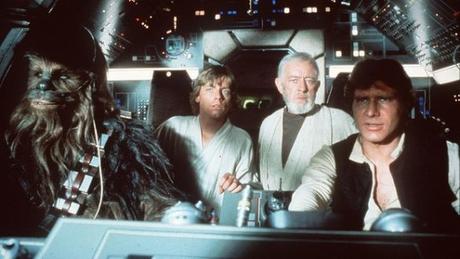
THE ECONOMICS OF STAR WARS (EP. VII) – THE FORCE AWAKENS:
The film cost $350 million to make and market, and it’s already reaped $517 million in global ticket sales. It shattered both the single-day gross revenue record, becoming the first film to pull in $100 million in a single day, and raked in $238 million in North America alone.
Harrison Ford (Han Solo) came away the big winner on Disney and Lucasfilm’s sequel with a paycheck upwards of $10 million and as high as $20 million to reprise his role of Han Solo. Harrison Ford reportedly earned somewhere in the neighborhood of $10-$20 million for the film. Mark Hamill (Luke Skywalker) and Carrie Fisher (Leia Organa) each netted in the low 7-figure ballpark.
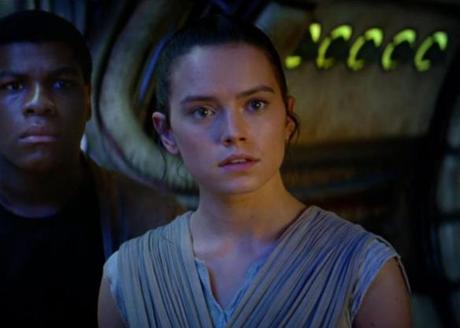
Disney made a decision in 2014 prior to casting the new roles to create a “legacy pay scale” intended for talent like Ford, Fisher and Hamill, who had previously been a part of the “Star Wars” universe, and general pay scale for actors that would be appearing for the first time. Hamill and Fisher’s salaries are expected to rise in upcoming installments as their parts grow with each film. As for the younger talent receiving lower salaries — it’s a fairly common practice in today’s market for newer actors, especially with so many negotiations involving back-end box office bonuses.
The salaries don’t include back-end bonuses from the pic’s box office haul that in a rare case doesn’t even kick in till the film crosses $1 billion worldwide, and following the success of “The Force Awakens,” deals are expected to be renegotiated before the next films get underway.
While it’s also worth noting that it’s standard for large scale, multi-installment features like this to grant stars a monetary bonus, in the case of “The Force Awakens,” the cast won’t receive these extra paydays until the film crosses the $1 billion earnings threshold. (For comparison’s sake, “Hunger Games” star Jennifer Lawrence took in $500k for her first installment, in addition to bonuses for the film’s success, and “Twilight” stars Robert Pattinson and Kristen Stewart each earned $2 million for the initial film (pre-bonuses).
HOW IMPORTANT IS STAR WARS FOR WALT DISNEY COMPANY ?
Star Wars” is a small part of the Disney empire. Star Wars” is epic, it just not as epic as Walt Disney. Disney reported revenue of $48.8 billion over the past 12 months. That means “Star Wars'” first weekend of revenue is just 1% of Disney’s total revenue over a year’s time. Even if the film generates $1.95 billion in global revenue in the box office, as expected by Goldman Sachs, that would be just 4% of Disney’s annual revenue.

The Main Cast Of STAR WARS (EP. VII) – THE FORCE AWAKENS
Director: J.J. Abrams
Writers:
J.J. Abrams
Michael Arndt
Lawrence Kasdan
Actors:
Warwick Davis
John Boyega
Daisy Ridley
Adam Driver
Oscar Isaac
Andy Serkis
Domhnall Gleeson
Max von Sydow
Harrison Ford
Carrie Fisher
Mark Hamill
Anthony Daniels
Peter Mayhew
Kenny Baker
Producers:
J.J. Abrams
Bryan Burk
Kathleen Kennedy
Composer: John Williams
